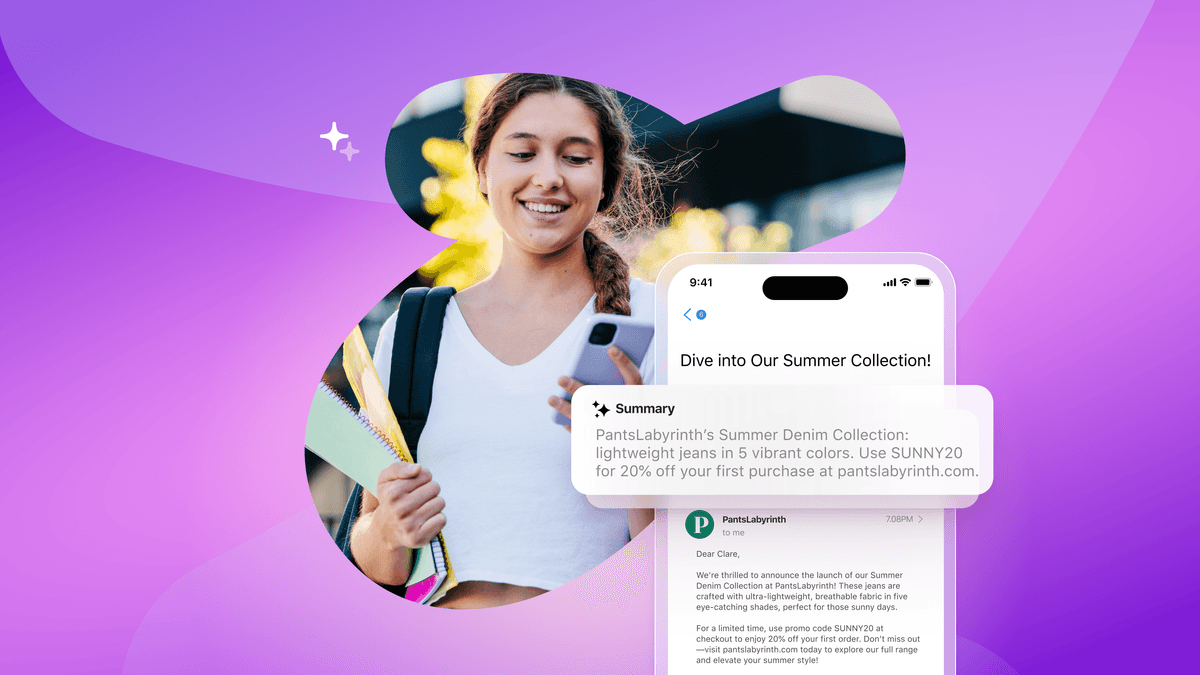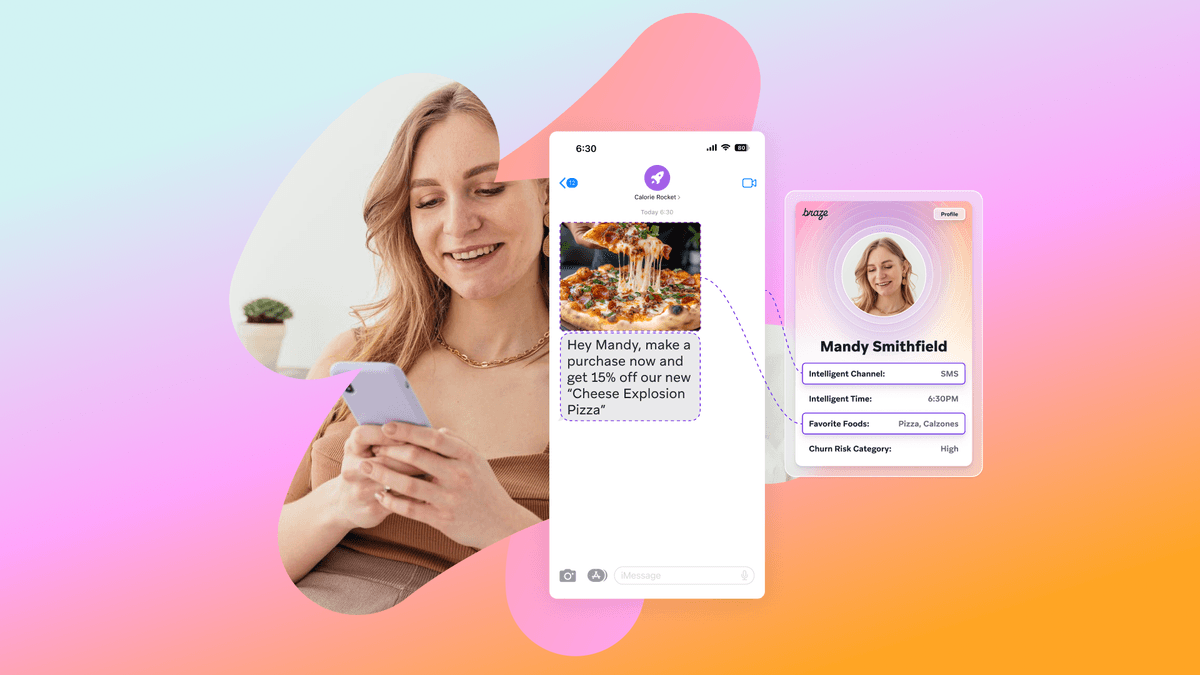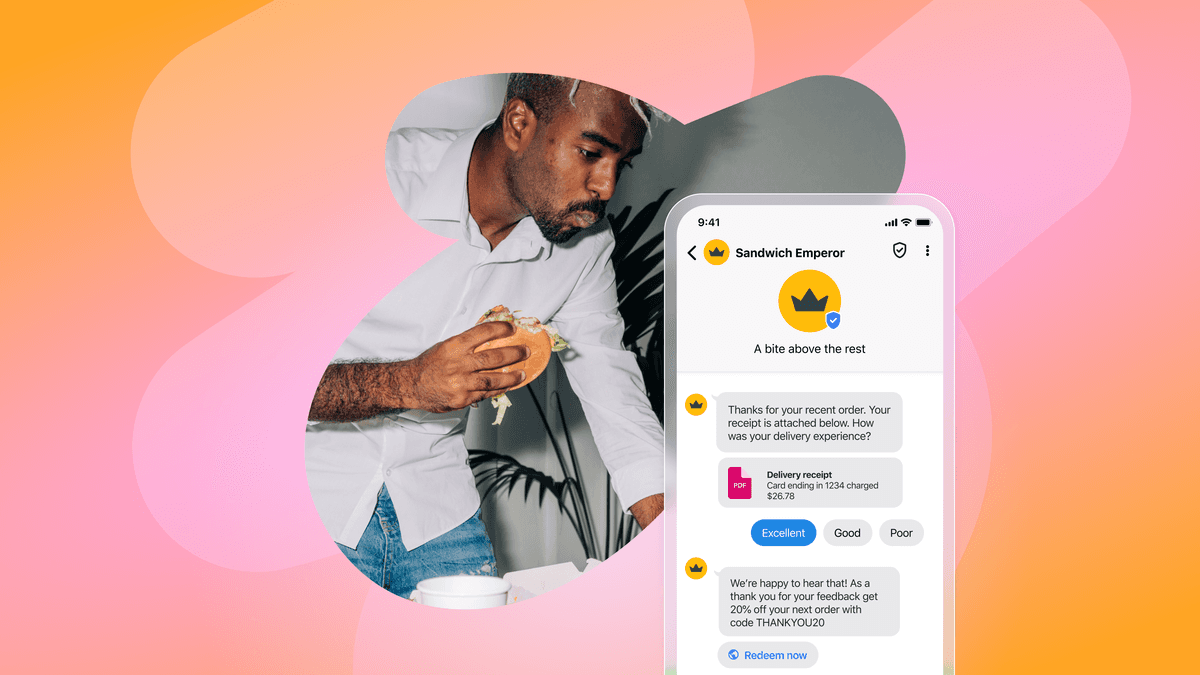Emojis: Why 👻👏😱 Might Be Just What Your Marketing Needs
Published on January 22, 2016/Last edited on January 22, 2016/8 min read
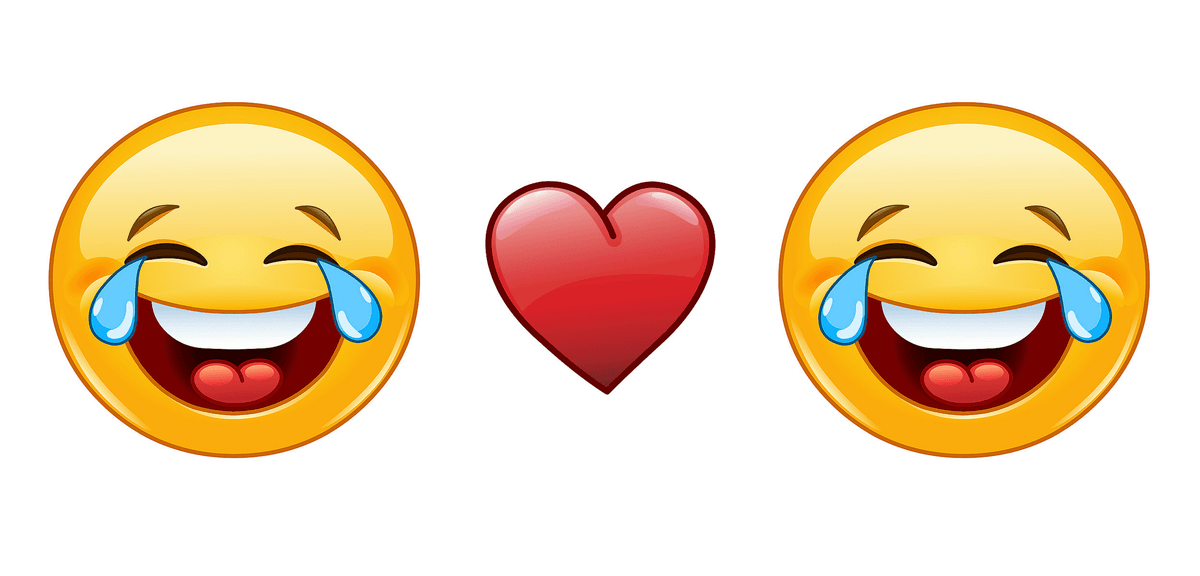

Todd Grennan
Content Production Principal, Content Marketing at BrazeIt sometimes feels like every passing day brings with it some new technology, social platform, or outreach channel that marketers have to stay on top of. Web push notifications. Virtual reality. Wearables. And keeping current with the latest marketing possibilities isn’t just about making sure that you have the ability to reach your customers where they are—it’s also about ensuring that you can engage them in ways they’ll relate to.
While words and pictures are in no danger of going extinct anytime soon, the rise of mobile has popularized new ways of communicating like animated GIFs and the topic we’re looking at today, emojis! Or, written another way: 💻👍📱💪. Sure, emojis are goofy and cartoony, but there’s something special about them, something that could add value to your marketing efforts. So let’s take a closer look at this new communications medium and how it can help marketers speak more effectively with their audiences.
What’s an emoji, anyway?
Well, 🐙 is an emoji. So is 🎃 and 🌂 and 🚝. Which is to say, emojis are text-sized images—pictograms, really—that can be used both to depict specific objects and convey abstract concepts, emotions, and more. (And while they’re similar to emoticons, emojis are their own unique thing.)
Where did emojis come from?
From Japan, like so many great things. The first emoji was created in the late 1990s by Shigetaka Kurita, an employee of Japan’s NTT DoCoMo telecom company. The company was working on launching the first-ever mobile Internet platform—known as i-mode—and Kurita was looking for a way to more effectively convey information on the tiny screens found on cellphones of the era. Drawing inspiration from kanji (Japanese written characters), manga (Japanese comics), weather icons, and more, he put together the first 176 emojis, which proved so popular that they were quickly adopted by other mobile carriers across Japan.
How did emojis spread outside of Japan?
Honestly? It was kind of an accident. Google and Apple initially struggled to break into Japan’s mobile market, in part because early versions of Android and iOS didn’t support emojis. Apple responded by making emojis available to customers who downloaded Japanese-language apps, but word got out and soon emojis were being used on iOS devices all over the world, leading to the release of emoji support for all iPhone users in 2011. Google soon followed suit and now you can use emojis on Android and Chrome, as well as on Microsoft Windows, among other mobile and desktop operating systems.
Why do emojis look different on different devices and operating systems?
The emojis you see on your smartphone or tablet are listed in Unicode, a computing standard that oversees the characters and symbols supported by all major OSes, search engines, or programs. But while Unicode includes, for instance, the emoji representing “neutral face” (😐), it doesn’t require every system that supports unicode to render that emoji in precisely the same way. That’s led to significant difference between iOS and Android depictions of emojis—the “pile of poo” emoji (💩), for instance, is depicted with a smile in iOS and OS X, but as a brown pile surrounded by buzzing flies in Android and Chrome.
How popular are emojis?
REALLY popular!!! (💥💥💥💥💥💥💥)
92% of people online use emojis and more than 30% use them multiple times a day. Nearly half of the text posted on Instagram is made up of emojis. And while there’s a perception that emojis are mostly popular among children, teens, and twentysomethings, the majority of people online use emojis frequently, including 62% of users over the age of 35. There is something of a gender divide, however, with significantly more women than men using emojis frequently.
Emojis are so popular that Sony Pictures recently announced plans to make an animated film about them and the Oxford English Dictionary named 😂 as its 2015 word of the year. So, yeah. Pretty big.
Are emojis a new language?
Emojis are definitely a new way for people to convey information, but whether they represent the birth of a language is still up for debate. Some point to emojis’ lack of established sentence structure and complex grammar as a sign that they aren’t a real, robust language, while others argue that emojis may well be in an early stage that will blossom into a new, totally visual way of communicating that transcends national borders and traditional language barriers. Only time will tell.
What can you do with emojis?
While most people use emojis to spice up messages to friends or family, or to add some flare to posts on social networks, some have taken things a step further. Drake got a tattoo of the 🙏 emoji. And fans of emojis and Herman Melville founded a Kickstarter account to fund the translation of an all-emoji edition of Moby Dick (known—of course—as Emoji Dick 🐳). This is probably just the tip of the iceberg.
What makes emojis valuable to marketers?
1) Emojis keep things snappy
Brevity is the soul of wit—and also the key to effective push notifications. Messages in this channel that clock in under 25 characters have the highest conversion rates in both iOS and Android, giving marketers a major incentive to keep things brief. Because emojis only count as two characters each, they’re an elegant way to convey more information in a shorter amount of space, letting you send brief messages that still convey the fullness of what you’re trying to communicate.
2) Emojis are great at softening the tone of written copy
One of the major difficulties in communicating on mobile is tone. Everyone has had the experience of receiving a text or an email where the message is so clipped that you start to wonder if the sender is being sarcastic or sincere. The same issue crops up when you’re messaging your customers, and emojis make it easy to take the edge off your words. If you’re sending a push notification to announce a sale, it’s easy to come off as aggressive:
Big holiday sale! Today only!
But by taking advantage of a few well-chosen emojis, it’s possible to soften that message, to make it appealing and approachable without distracting from its purpose:
Big holiday sale! 🎃🎄 Today only! 📆
How are brands making use of emojis?
Some haven’t yet heard the siren 🎤🎤🎤 of emojis, but a lot of companies have begun using them in their tweets, Facebook posts, and mobile messaging. But there are a few brands that have really gone for it, taking advantage of the possibilities that emojis represent in fun, innovative ways:
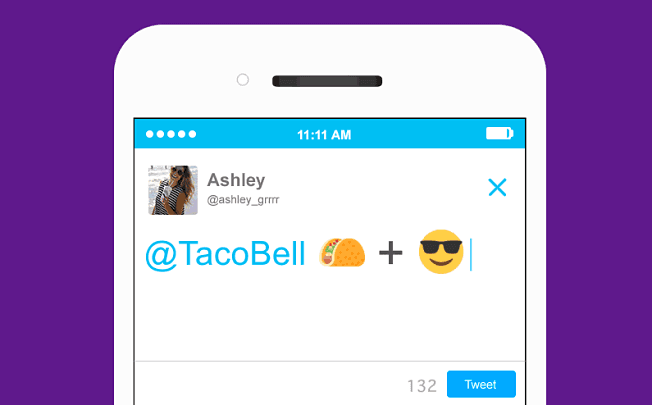
Photo courtesy of Adweek
- Domino’s made it possible to order pizza by tweeting 🍕.
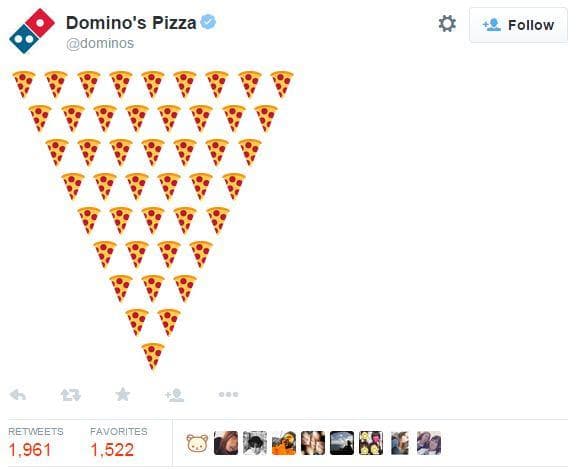
Photo courtesy of The Independent
- The World Wildlife Fund raised money and awareness about endangered animals by highlighting their emojis.
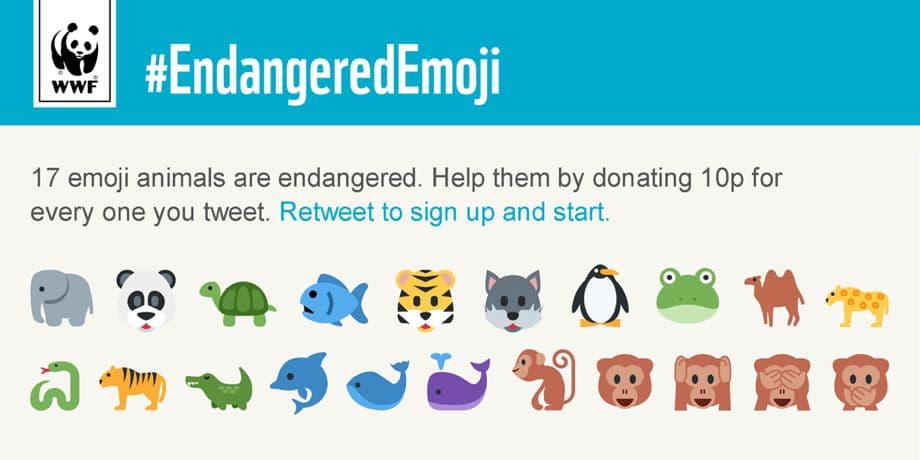
Picture courtesy of Slate
- Chevrolet announced the 2016 Cruze with an all-emoji press release.
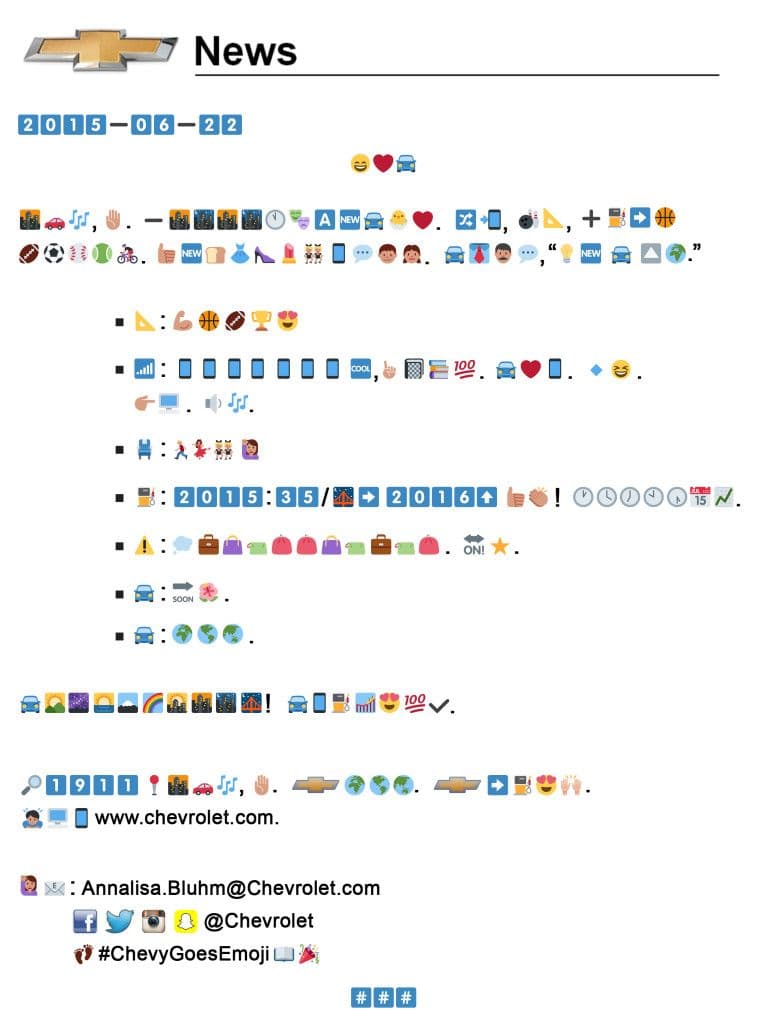
Picture courtesy of Chevrolet
These brands’ usages were plays for media attention (successful ones!), but also reflections of their audiences’ increasing familiarity with and use of emojis. And as emojis continue to establish themselves as a valuable part of our written discourse, more brands will be looking for ways to take advantage of this new medium to reach their customers.
What should marketers keep in mind when using emojis?
1) Hidden meanings
A lot of emojis mean exactly what they seem to mean. If someone uses 📱, the odds are pretty good that they’re trying to indicate a mobile phone. Similarly,💲is pretty much always going to connote money. But there are a lot of emojis that have acquired meanings that may not be obvious if you’re new to the form, including: 👯 (sisters or female best friends); 🙌 (only the beginning); and 🍤 (which, to at least one person, evokes Mariah Carey).
You don’t have to be an expert on emojis to use them, but a little bit of research before you start is a good idea. Don’t be the brand that uses 🍆🍑 to promote a sale on fresh produce.
2) Emoji fatigue
Emojis can be a fun, effective way to get your message across to customers, but be mindful of how often you’re using them. If every piece of outreach you send features multiple emojis, it may be time to pull back. Like GIFs, emojis work best as the spice that enlivens your messages, not the dominant flavor. A/B testing could be a good way to find the right balance for your audience, or segments of your audience.
3) Evolving usage
While emojis aren’t brand new, their rise to global popularity is still quite recent. That means that the ways we use and understand emojis today aren’t fixed and may well change and evolve over time. Make sure that as you start using emojis to reach your audience, you’re also keeping tabs on emoji trends and usage—that way, you can ensure that your emoji game is current and accurately conveying the message you’re looking to get across.
Anything else?
Just this: 👍🍀.
Related Tags
Be Absolutely Engaging.™
Sign up for regular updates from Braze.
